Your fitness watch’s recovery data matters because it transforms complex physiological signals into actionable insights that can prevent overtraining and optimize performance. By analyzing heart rate variability, sleep quality, and resting heart rate overnight, these devices create a sophisticated early warning system that catches fatigue before you feel it. While accuracy ranges from 85-98%, the directional guidance helps you adjust training intensity and avoid injury. Understanding these metrics reveals smarter training decisions.
The Science Behind Recovery Score Calculations

When you check your fitness watch each morning, complex algorithms work behind the scenes to transform your body’s overnight data into a single recovery score. Your device analyzes multiple physiological indicators through multivariate analysis, combining your resting heart rate, heart rate variability, body temperature fluctuations, and sleep quality metrics.
These algorithms don’t just look at individual measurements—they integrate data from different sources to create thorough insights about your recovery state.
Advanced fitness algorithms synthesize multiple data streams rather than analyzing isolated metrics to deliver comprehensive recovery insights.
Your watch uses historical data patterns to predict ideal recovery strategies tailored specifically to you. The algorithmic models factor in assumptions about your behavior, including exercise intensity and sleep patterns. These daily scores directly influence the exercise goals your tracker sets for the upcoming day’s activities.
Some devices incorporate user feedback to improve accuracy over time, creating increasingly personalized recovery assessments that help you make informed decisions about your daily training intensity.
Heart Rate Variability as Your Body’s Recovery Compass
Your heart doesn’t beat like a metronome—and that’s exactly what makes it such a powerful recovery indicator.
Heart Rate Variability (HRV) measures the tiny variations between consecutive heartbeats, reflecting your autonomic nervous system’s balance between stress and recovery modes.
Your fitness watch captures this data most accurately during deep sleep, when your body’s in a stable state. These measurements create a baseline that reveals whether you’re ready for intense training or need additional recovery time.
High HRV typically indicates you’re well-recovered and ready for challenging workouts, while low HRV suggests your body’s still processing previous stress. For optimal accuracy, your device needs 2 to 5 minutes of consistent measurement to establish reliable averages.
Modern wearables achieve up to 99% accuracy in HRV measurement, transforming this once clinic-only metric into your personal recovery compass that guides daily training decisions.
How Sleep Quality Transforms Your Recovery Metrics
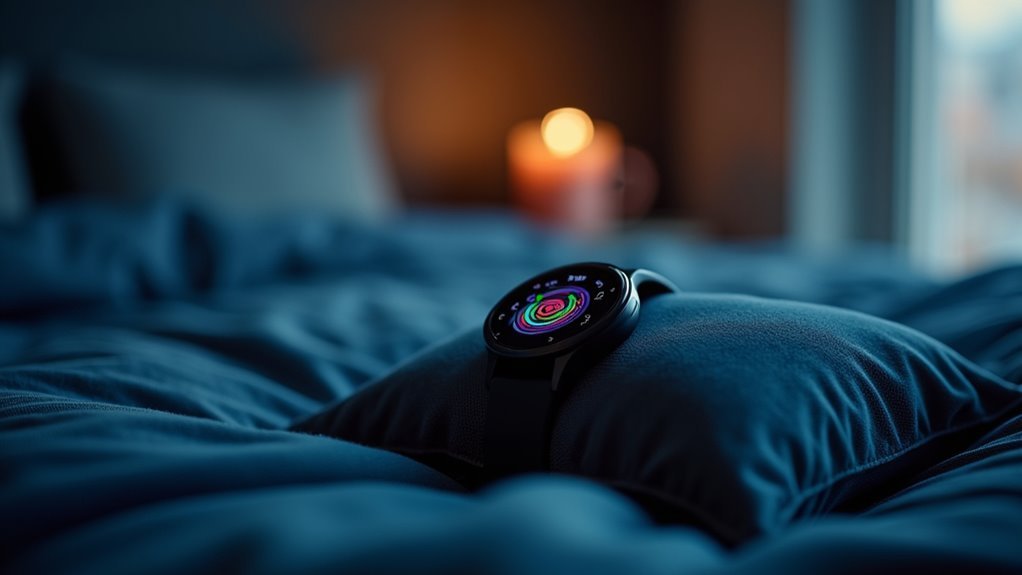
Your sleep quality directly transforms the recovery metrics displayed on your fitness watch through three critical mechanisms.
Sleep depth determines your heart rate variability readings, with deeper sleep stages promoting higher HRV scores that indicate better recovery.
Meanwhile, your REM cycles and total sleep duration work together to influence how quickly your device registers full physiological restoration.
Athletes who consistently get ≥8 hours of sleep show significantly better recovery patterns and reduced risk of injury or illness.
Sleep Depth Affects HRV
As you drift through different stages of sleep each night, your heart rate variability undergoes remarkable changes that directly impact your fitness watch’s recovery metrics. During deep sleep, your parasympathetic nervous system takes control, increasing HRV and promoting cardiovascular recovery. Your sympathetic activity decreases considerably, allowing your heart rate to stabilize and recover from daily stressors.
| Sleep Stage | HRV Pattern | Recovery Impact |
|---|---|---|
| Light Sleep | Moderate variability | Basic restoration begins |
| Deep Sleep | Highest HRV | Peak cardiovascular recovery |
| REM Sleep | Variable patterns | Neural recovery focus |
| Changes | Fluctuating HRV | Autonomic adjustments |
| Awake | Lower HRV | Stress response activation |
Your fitness watch captures these patterns, translating sleep depth into actionable recovery data that guides your training decisions. Research shows that nocturnal HRV increases significantly compared to daytime measurements, reflecting the body’s enhanced recovery capacity during nighttime hours.
REM Cycles Impact Recovery
While deep sleep handles the heavy lifting of physical restoration, REM cycles orchestrate the delicate dance of mental recovery that transforms your fitness watch’s overnight data.
Your device captures how REM sleep regulates neurotransmitters essential for muscle function while consolidating memories that improve skill adaptation. When REM cycles get disrupted, you’ll notice elevated cortisol levels reflected in your recovery metrics, leading to slower heart rate recovery and reduced HRV scores.
Your fitness watch reveals this through overnight physiological changes—poor REM sleep creates mood disturbances and increased stress that directly impact your autonomic nervous system function. During REM sleep, your heart rate increases significantly, resembling the levels you experience while awake, which explains the fluctuations your device records throughout the night.
The emotional regulation and stress reduction happening during quality REM cycles don’t just affect your mental state; they’re actively improving your physical recovery by optimizing hormone balance and reducing inflammation markers your device monitors.
Sleep Duration Influences Metrics
Beyond the intricate neurological processes of REM sleep, the sheer quantity of hours you spend sleeping creates measurable shifts in your fitness watch’s recovery calculations.
When you extend your sleep by just 46-113 minutes nightly, your device detects improved reaction times and enhanced performance metrics. Your watch uses this duration data as a key input for recovery scores—longer sleep directly correlates with better energy levels and reduced fatigue readings.
Most elite athletes sleep less than eight hours, missing their 8.3-hour requirement.
If you’re averaging seven hours, pushing toward nine to ten hours produces dramatic improvements in your recovery metrics. Your fitness tracker captures these changes through reduced perceived effort scores and improved readiness indicators, making sleep extension one of the most effective recovery interventions you can implement. Inadequate deep sleep may prevent your muscles from being ready for the next training session, which your device will reflect in lowered recovery scores.
Training Load Adjustments Based on Recovery Data
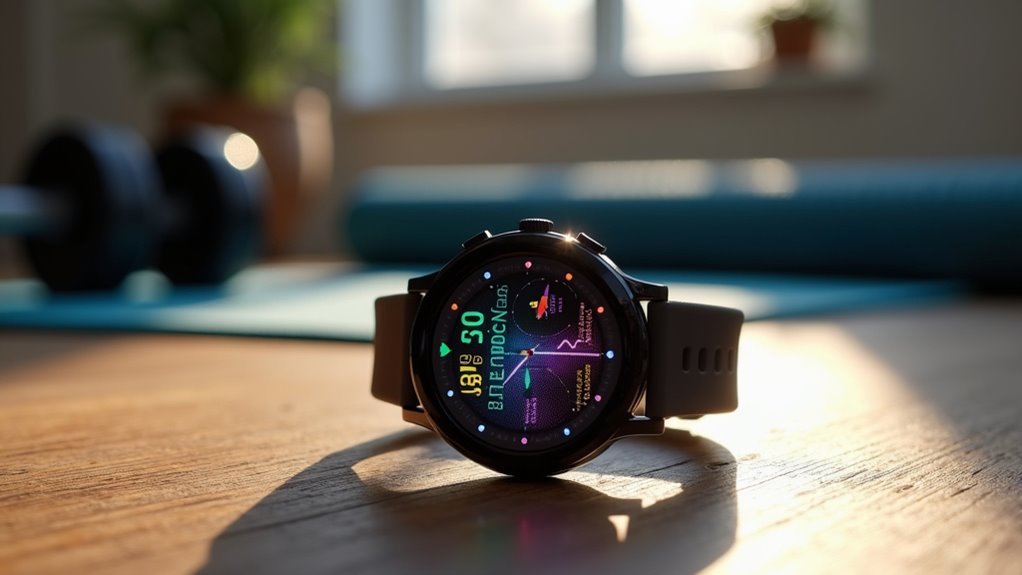
When your fitness watch indicates low heart rate variability or poor sleep quality, it’s signaling that your body needs more time to recover before your next intense workout.
Modern devices like Apple Watch, Garmin, and COROS integrate recovery metrics with training load recommendations to guide your decisions. Instead of pushing through fatigue, you can delay or reduce workout intensity based on these insights.
This data-driven approach prevents overtraining and reduces injury risk. Your watch calculates training load by combining workout intensity and duration, then suggests adjustments when recovery metrics show you’re not ready. Apple’s new approach incorporates effort rating from 1 to 10 alongside duration to create a more comprehensive training load calculation.
Accuracy Limitations and What They Mean for Athletes
You need to understand that your fitness watch’s recovery data contains measurement errors ranging from 1.6% to 14.8% during exercise, which can greatly impact your training decisions.
These inaccuracies become especially problematic when you’re relying on heart rate variability readings for recovery assessment, as measurement noise from your physiology and exercise intensity can distort the correlations you’re seeing.
Your training adaptation strategies must account for these limitations by treating recovery metrics as directional guidance rather than precise measurements. However, heart-rate measurements have become relatively accurate at rest and during exercise, making them more reliable indicators for recovery monitoring than other fitness metrics.
Measurement Error Impact
How accurate are those recovery metrics flashing on your fitness watch screen? The reality is sobering: heart rate errors alone range from 1.6% to 14.8% depending on your device and activity.
These measurement inconsistencies cascade into your recovery calculations, creating a ripple effect that impacts every metric you’re tracking.
Here’s how measurement errors specifically affect your training decisions:
- Heart rate inaccuracies distort strain calculations, making recovery times unreliable.
- Sleep stage detection shows weak reliability, especially for deep sleep phases.
- Calorie burn estimates use generalized formulas that ignore your unique metabolism.
- Exercise misclassification occurs with complex or uncommon movements.
You shouldn’t abandon your fitness watch, but understanding these limitations prevents over-reliance on potentially flawed data when making critical training decisions. Remember that no wearable device is 100% accurate, so these metrics should guide rather than dictate your training approach.
HRV Correlation Issues
While your fitness watch confidently displays HRV scores each morning, the underlying measurements often deviate considerably from clinical-grade data that athletes actually need.
These devices struggle with accurate RR interval measurement, which forms the foundation of reliable HRV analysis. Optical sensors in fitness watches aren’t optimized for the precise beat-to-beat variability detection that HRV requires.
Motion artifacts during exercise compound these issues, while factors like skin tone, sensor placement, and environmental conditions further compromise accuracy.
Different brands use varying algorithms to process this imperfect data, creating inconsistencies across devices. Research shows that brands using RMSSD calculations demonstrate a wider range of error compared to more accurate methods. For athletes depending on HRV to optimize training intensity and prevent overtraining, these correlation issues mean you’re potentially making significant decisions based on flawed information that could impact your performance and recovery strategies.
Training Adaptation Strategies
These measurement inconsistencies create a cascade of problems when you’re trying to build effective training adaptation strategies around your fitness watch data.
Over-reliance on incomplete recovery metrics can derail your periodization and load management, leading you to push too hard when you need rest or back off when you’re actually ready for intensity.
Here’s how to adapt your training approach:
- Cross-reference device readings with subjective feelings like energy levels, soreness, and mood before making training decisions
- Treat recovery scores as suggestions, not commands that dictate your entire workout plan
- Benchmark your device against lab-tested physiological markers to understand its specific accuracy patterns
- Integrate both wearable metrics and real-world performance feedback for holistic training adaptation assessment
Remember that generalized calorie burn formulas and recovery algorithms cannot account for your unique metabolic profile and individual response patterns.
Your body’s adaptive signals matter more than algorithms.
Preventing Overtraining Through Continuous Monitoring
Although overtraining syndrome affects up to 30% of endurance athletes at some point in their careers, fitness watches now provide the continuous monitoring capabilities needed to catch warning signs before they escalate into serious problems.
Your watch tracks HRV patterns that reveal when your autonomic nervous system’s under stress, sending alerts during ‘yellow flag’ days when you should scale back intensity. When HRV readings stay consistently low, you’ll receive ‘red flag’ warnings indicating extended recovery’s necessary.
Real-time heart rate monitoring shows immediate exertion levels and post-workout recovery rates, while motion sensors detect movement inefficiencies that signal fatigue. Modern fitness trackers also monitor sleep quality, providing crucial recovery data that helps determine your readiness for the next training session.
These objective alerts prompt you to adjust training before subjective feelings catch up, preventing the cascade of symptoms that lead to full overtraining syndrome.
Physiological Indicators That Drive Recovery Assessments
Your fitness watch transforms complex physiological data into actionable recovery insights by monitoring specific biomarkers that reveal how your body responds to training stress.
These devices track key indicators that scientists use to assess athletic recovery and adaptation.
The most reliable physiological markers your watch monitors include:
- Heart Rate Variability (HRV) – Measures autonomic nervous system balance between sympathetic and parasympathetic activity
- Resting Heart Rate Changes – Elevations of 5-7 beats per minute signal incomplete recovery
- Heart Rate Recovery – How quickly your pulse drops after exercise reflects your training status
- Sleep Quality Metrics – Deep sleep stages when your body repairs muscle tissue and restores energy
Effective monitoring requires multiple assessments over time rather than relying on single data points to provide meaningful insights into your recovery patterns.
Real-World Applications in Clinical and Athletic Settings
When fitness watches move from consumer gadgets to professional tools, they’re revolutionizing how healthcare providers and athletic trainers monitor recovery in real-time.
You’ll find hospitals using continuous crucial sign tracking to detect post-discharge complications early, reducing readmission rates considerably. Meanwhile, sports teams leverage heart rate variability and performance metrics to optimize training loads and prevent overtraining injuries.
Your recovery data enables clinicians to make evidence-based adjustments to rehabilitation plans, while AI-powered analytics predict potential setbacks before they occur.
Remote monitoring capabilities mean you’re supervised even outside medical facilities, with real-time alerts notifying caregivers of concerning changes. Modern devices now track biochemical markers through advanced sensors, providing deeper insights into your body’s recovery processes at the cellular level.
Studies show smartwatch users achieve 37% more steps post-discharge and maintain lower heart rates throughout recovery, demonstrating measurable clinical improvements.
Maximizing Performance Through Recovery-Driven Training Plans
Professional applications demonstrate fitness watches’ clinical value, but their greatest impact lies in transforming how athletes approach daily training decisions. Your recovery data creates personalized training adaptations that enhance performance while preventing overtraining.
Here’s how recovery-driven planning maximizes your training:
- Daily intensity adjustments – Your HRV and resting heart rate determine whether you’ll tackle high-intensity intervals or opt for recovery runs.
- Periodization support – Recovery trends identify ideal timing for pushing limits versus incorporating rest phases.
- Injury prevention – Automated warnings flag elevated overtraining risk before you compromise your health.
- Volume tolerance – Continuous monitoring reveals your capacity for increased training loads without burnout.
Your watch’s five-day baseline establishment creates individualized recovery ranges that adapt training recommendations to your unique physiology, dramatically improving training efficiency. Remember that recovery algorithms may introduce inconsistencies, so balancing device data with listening to your body creates the most effective training approach.
Frequently Asked Questions
Do Different Fitness Watch Brands Calculate Recovery Scores the Same Way?
No, different fitness watch brands don’t calculate recovery scores the same way. Each uses proprietary algorithms with unique names like Garmin’s “Training Readiness” or WHOOP’s “Recovery Score,” creating inconsistent results between devices.
Can Recovery Scores Help Determine When to Take Complete Rest Days?
Yes, you can use recovery scores to identify when you’re under-recovered and need complete rest days. However, don’t rely solely on scores—combine them with how you’re actually feeling.
How Long Does It Take for Recovery Scores to Show Improvement?
You’ll typically see recovery score improvements after several weeks of consistent data collection and healthy habits. Your body’s adaptation period varies individually, but most people notice meaningful trends within 4-6 weeks.
Are Recovery Scores Accurate for People With Medical Conditions or Medications?
Recovery scores aren’t fully accurate if you’ve got medical conditions or take medications. Your heart rate, temperature, and metabolism can be altered, causing up to 20% error in readings.
Should Beginners Trust Recovery Scores or Focus on How They Feel?
You should focus on how you feel initially. Recovery scores can mislead beginners who don’t understand their complexity. Once you’ve developed body awareness, you’ll use scores as supplementary data, not primary guidance.
In Summary
You’re now equipped to understand that your fitness watch’s recovery data isn’t just fancy metrics—it’s actionable intelligence about your body’s readiness to perform. You can trust these measurements to guide your training decisions, prevent burnout, and optimize your performance when you understand their limitations. Don’t ignore what your body’s telling you through these devices; instead, use this data to train smarter, recover better, and achieve your goals more effectively.

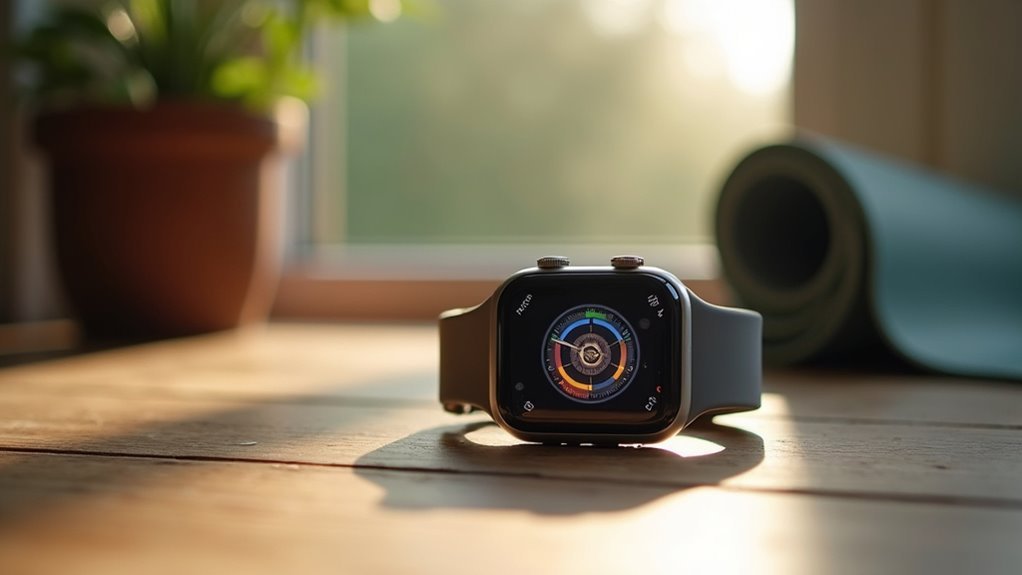

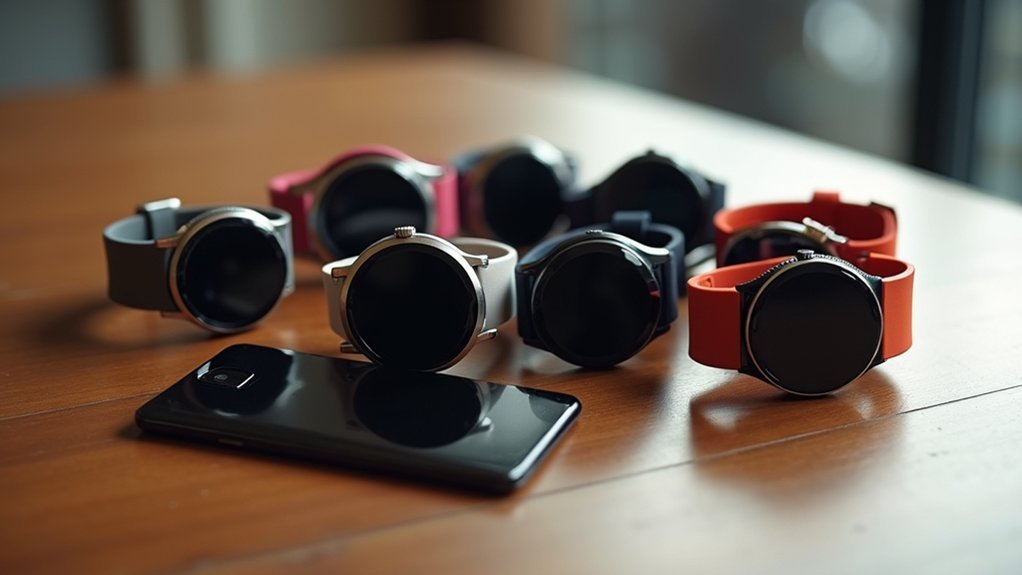
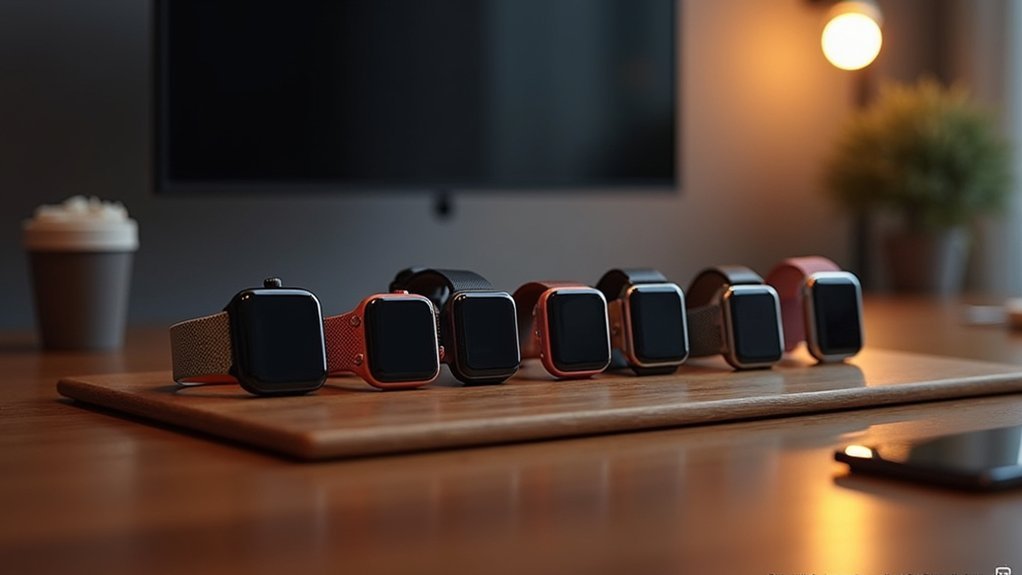
Leave a Reply